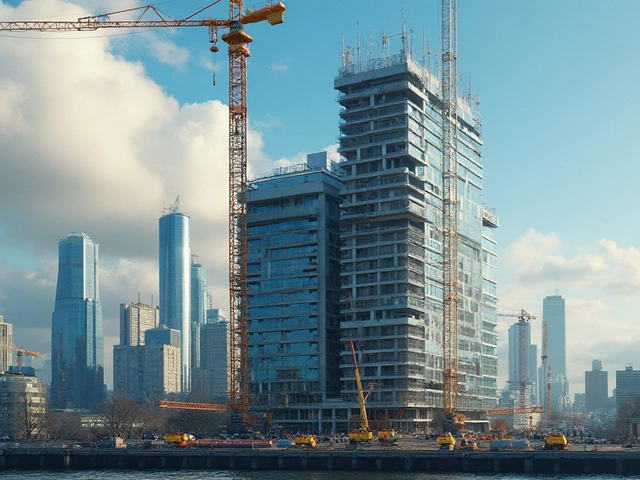Commercial Buildings – Materials, Types, and What You Need to Know
When you’re planning a commercial building, the biggest decisions happen early: what you build with and how you build it. The right stone, concrete, and steel can save you time, money, and headaches down the line. At Lime Hillock Construction Material Resources we source limestone and other rock right here in the UK, so you get quality without the extra travel cost.
First off, think about the load your building will carry. Retail stores, offices, and warehouses each have different weight demands. A warehouse with heavy racks needs a thicker slab and stronger base rock than a small office. Picking the right quarry material helps you meet those demands without over‑engineering.
Choosing the Right Quarry Materials for Commercial Projects
Our local limestone is a favorite for commercial floors because it’s dense, wear‑resistant, and easy to cut to size. It also offers good drainage, which is key for basements and underground parking. If you need a lighter fill, we also provide crushed stone that compacts well and provides a stable base for foundations.
Here’s a quick checklist when you talk to your supplier:
- Confirm the material’s compressive strength meets your design specs.
- Ask for a sample batch to test on site – you’ll spot any unexpected color or grain issues early.
- Check delivery windows; local quarries can often drop off within 24‑48 hours, keeping your schedule tight.
Another tip: ask for material certifications. A simple document showing the stone meets British Standards (like BS EN 13139 for aggregates) can smooth the approval process with architects and engineers.
Understanding Commercial Building Types and Safety Standards
Commercial buildings fall into a few main categories: Type 1 (high‑rise steel or concrete), Type 4 (steel frame with non‑combustible exterior), and Type 5 (wood‑frame). Each type follows different fire‑rating rules and load requirements. Knowing which class your project belongs to helps you pick the right coating, fireproofing, and insulation.
For example, a Type 4 office building needs a non‑combustible roof membrane and fire‑resistant gypsum boards. Our limestone can be used as a fire‑resistant cladding layer, adding an extra safety margin without extra cost.
Don’t forget about local building codes. In the UK, the Building Regulations Part B covers fire safety, while Part A deals with structural integrity. A quick chat with your local authority or a chartered surveyor can highlight any region‑specific rules, like additional damp‑proofing for coastal sites.
Talking to an architect early on also helps. They’ll tell you if a particular stone finish will clash with the design language or if a lighter aggregate would be a better fit for a mezzanine floor.
One common mistake is underestimating the importance of proper compaction. Even the best limestone will settle if it’s not compacted correctly. Using a vibratory roller on the base layer reduces settlement and keeps your finished floor level.
Finally, keep an eye on the big picture: sustainability. Our quarry recycles waste rock into secondary aggregate, reducing landfill and offering an eco‑friendly option for green‑building projects.
Bottom line: pick the right material, match it to your building type, and stay on top of safety codes. With local quarry supply, you get fast delivery, quality checks, and a partner who understands the commercial construction game. Ready to start? Reach out to Lime Hillock and let’s get your project on solid ground.
What Is the Difference Between Commercial and Residential Buildings?

Commercial and residential buildings differ in design, codes, materials, and systems. One is built for living; the other for business. Understanding these differences helps avoid costly mistakes.
read moreCommercial Construction: What Makes a Building 'Commercial'?

What really defines a commercial building? This article breaks down what separates commercial from residential properties, focusing on construction rules, uses, common types, and the red tape involved. You'll get practical tips for figuring out if your project counts as commercial, plus warnings about common pitfalls. It's designed to help anyone—from small business owners to developers—spot the signs and steer clear of costly mistakes.
read more



